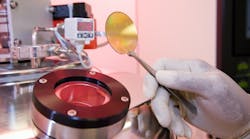In Quiet Endorsement of Silicon Carbide, Littelfuse Invests $15 Million in Monolith
Littelfuse, a major supplier of circuit protection devices, invested $15 million to take majority ownership of Monolith Semiconductor, a startup that has developed power devices for applications in renewable energy and electric vehicles.
Monolith makes power diodes and switches out of silicon carbide, an advanced semiconductor that allows devices to switch faster, handle higher voltages, and suppress heat better than silicon chips. It also has the potential to significantly cut the energy lost in power conversion, making it a popular replacement for silicon.
Though small, the investment shows how the center of gravity in power electronics is sliding away from silicon. The current generation of silicon carbide arrived with a more somber tone than previous years, but it has clearly matured. Tesla is using silicon carbide, more commonly known as SiC, in its charging stations, while Toyota plugged it in an experimental hybrid.
"With the increasing needs to make power electronic devices that will be stronger and more efficient, we are excited about the opportunities this game-changing technology provides," said Ian Highley, chief technology officer and general manager of the semiconductor products business at Littelfuse, in a statement.
Littelfuse, founded in 1927, is known for selling circuit protection devices as well as automotive sensors and fuses. But last year it became the latest to start offering a number of SiC devices, ones that handle either 650 or 1200 volts. The company said that it would invest in Monolith again as the business hits milestones.
Co-founded in 2013 by Kiran Chatty, a former engineer at SemiSouth Laboratories, Monolith released its first products last year, a pair of diodes rated for 1200 volts and said to reduce losses by over 50%. The company moved from Ithaca, N.Y., to Round Rock, Texas, after it signed a production deal with X-Fab in 2014.
The chips can be used inside devices that needs to switch between direct and alternating current. Yole Développement, a technology research firm based in Lyon, France, estimates that replacing silicon with SiC can optimize the efficiency of DC-AC conversion from 96% to 99% and AC-DC conversion from 85% to 90%.
The technology could allow aircraft companies to slough off 1,000 pounds from a passenger jet and reduce the weight of a locomotive by 5%, according to estimates from GE Global Research. It could also vastly improve the efficiency of solar panel inverters, as well as enhance the driving range of electric vehicles.
But it has been a long road from silicon carbide's origins as an industrial abrasive to an advanced semiconductor. The market has been slowed down by the complex and costly process of carefully etching patterns into SiC wafers. Silicon is also not dying out anytime soon, with companies pushing devices to higher voltages with lower losses.
One possible solution to these obstacles is the production from 4-inch to 6-inch wafers, which can yield more devices. General Electric is part of the New York Power Electronics Manufacturing Consortium, which is building an SiC foundry for 6-inch wafers in Utica, N.Y. The foundry X-Fab is also offering a 6-inch process.
In an earlier stage is another advanced semiconductor called gallium nitride, or GaN, which has made a big splash in the power electronics industry for promising the same performance as SiC with lower costs, since it can be layered onto cheap silicon wafers. GaN, which also has applications in antiballistic missile radar and lighting, has been billed as silicon's successor.
Infineon's $3 billion acqusition of International Rectifier in 2014 set off a wave of investment in the sector. Transphorm, a gallium-nitride power electronics startup, has raised over $212 million, with its most recent funding round hitting $70 million. Another big name is Efficient Power Conversion, which was founded by Alex Lidow, a former chief executive of International Rectifier.
Sales of advanced semiconductors have lagged, but the market's slow start has not exhausted the optimism of industry analysts. Richard Eden, who follows the power semiconductor market for IHS Markit, estimates that sales of silicon carbide and gallium nitride chips reached $210 million in 2015, rising to around $1.265 billion in 2020.
Eden said in a report last year that silicon carbide was already fighting in price with superjunction Mosfets, a type of high-voltage silicon transistor, at around 900 volts. He estimated that that GaN layered on cheap silicon substrates would match the price of silicon MOSFETs and insulated-gate bipolar transistors (IGBTs) by 2020.


